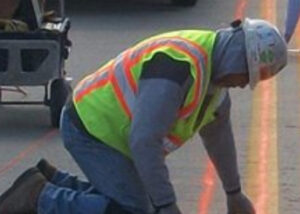Is there an underground storage tank that you have but you have not been using it? Perhaps you have concerns about your tank leaking later on, or you think your tank is going to negatively affect your property value. If this is how you feel, it might be in your best interest to get your storage tank removed. When having underground storage tanks removed, here is the process that should be followed.
Contact Local and State Governments
If you’re getting underground storage tanks removed, it’s important that you give local and state governments sufficient time before the removal process is conducted. You’ll have to provide them with a minimum of 30 days’ notice. It’s also possible that local municipalities could need permitting.
Get a Dependable Contractor for the Job
You want to find a reliable contractor who has the knowledge, experience, and credentials to remove underground storage tanks the correct way. The qualifications for the job will depend on the state in which you live.
When you get help from a reliable underground storage tank removal contractor, you can rest easy knowing that all necessary permits will be obtained and all safety guidelines, as well as environmental regulations, will be enforced.
Remove Products From Tank and Inert It
Use the proper disposal procedures while the residual materials from the tank get removed because some materials could be hazardous in some way.
Also, by inerting your tank, you lower the risk of having any explosive concerns. The tank’s oxygen supply gets displaced with a different non-explosive type of gas, like carbon dioxide.
Start Excavating
Before you can get to the top of your underground storage tank, you first have to get any surrounding soil away from the tank. This also helps provide access to nearby dispensers and product lines.
Tank Cleaning and Removal
Throughout the process of cleaning the tank and handling the waste, there are many requirements to be met. These requirements are in place to accommodate for various possible problems, like pipes getting disconnected and causing small spills that need containing. They are also needed to help with planning for inerting and cleaning the tank, dealing with sludge and liquids from the tank, identification, excavation, and removal of the tank system.
Managing Contaminated Soil
While removing underground storage tanks, you might run into contaminated soil. If this happens, handle the soil as per your state/federal guidelines.
After the tank gets removed, you also have to collect samples of soil. The location of your soil samples and how many you need will vary for each state. You might also need water samples if there is any groundwater during your excavation.
Underground Storage Tank Closure Report
How reporting works depends on your state, like many steps during the removal of underground storage tanks. Usually, the report will have analytical data that comes from samples of groundwater and soil you got. In addition, you should have no trouble giving a location where samples were taken, and you should get all soil disposal documented.
Concrete Visions Will Get The Job Done Right
Concrete Visions has been working with clients for over 25 years. Our G&M Services installers are certified with the industry’s major firestop product manufacturers. As part of our firestop service, we can assess abnormal field conditions and, with the manufacturer’s technical support assistance, provide engineering judgments in a timely fashion to comply with contract specifications. Our Field Mechanics undergo ongoing training, including mandatory monthly safety meetings, weekly Toolbox Talks where safety and equipment information is shred, and trainings on safe work standards and safety best practices.

